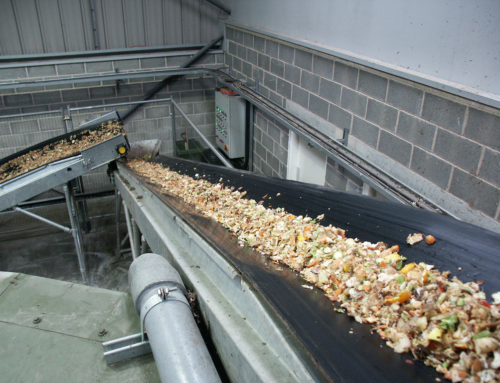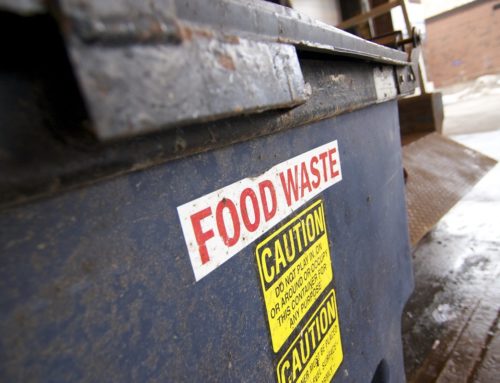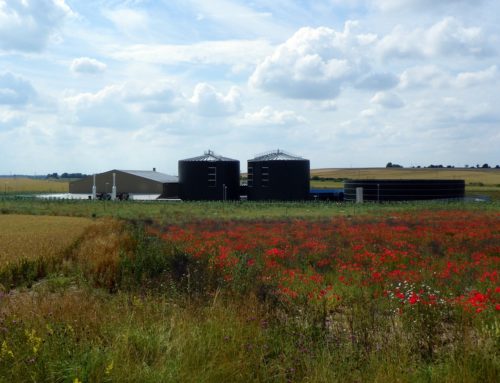by Peter Jones
7 minute read
What is the best environmental option for dealing with spent coffee grounds (SCGs)? Defra’s statutory guidance on the waste hierarchy is quite clear that anaerobic digestion (AD) is the preferred option for food waste, it is perhaps a question that should not need to be asked.
However, there are enterprising businesses and charities eager to offer alternative solutions for major producers of SCGs who are keen to keep their coffee out of the residual waste. So, is there any reason to think that, when it comes to coffee, we should diverge from Defra’s general guidance?
Digesting the literature
AD only takes preference over composting because the waste hierarchy allows exceptions. You can depart from the normal preference order “so as to achieve the best overall environmental outcome where this is justified by life-cycle thinking on the overall impacts of the generation and management of the waste.” AD is classed as a form of energy recovery, while composting is a form of recycling. The waste hierarchy prioritises recycling over energy recovery, but Defra’s guidance reflects various LCA analysis that shows that AD has a better overall environmental outcome for food waste than does composting.
That’s the position for food waste in general – but if SCGs produce little biogas in the AD process, or even inhibit gas production in the material with which it is co-digested, perhaps an alternative use for separately collected SCGs would be more beneficial. Is there any reason to think that coffee grounds perform badly? Let’s compare some data on the gas potential of SCG with food waste in general.
| Waste Stream | Approximate methane yield (m3 per tonne of volatile solids/organic matter) |
| Food waste | 400-600 |
| Fruit and vegetable waste | 200-500 |
| Spent Coffee Grounds | 255-360 |
There are quite wide ranges for food waste, as a good deal depends on its composition. Fats produce around 700m3 of methane per tonne; proteins around 300 m3 and carbohydrates around 200m3. SCGs are high in lipids, which boosts their gas potential. As a result, they fall well within the range for fruit and vegetable waste, similar to straw, grass or kale. It’s not the very best feedstock for AD, but on a par with a lot of materials that are commonly digested. There are also some indications that, where the soluble elements of coffee grounds are co-digested with other digestate such as cow manure, methane generation is increased by up around 10% – so coffee can perhaps act as something of a catalyst. Coffee hydrochars can produce even higher levels of methane.
Going to ground
If SCGs are a perfectly reasonable feedstock for AD, whether collected separately or mixed with other materials, perhaps they have other properties that tip the environmental balance in favour of an alternative use. Are SCGs an especially good compost?

Good grounds? Is anaerobic digestion the best treatment for coffee grounds? Photo: Mark (CC BY-NC-ND 2.0), via Flickr.
Ground to Ground is an organisation promoting the separate collection of coffee grounds for composting or mulching. They are largely US-based, where collections of organic waste for AD are still in their infancy – although they also have an initiative in London. Their focus, therefore, is on diverting coffee grounds from landfill – something that should certainly be encouraged. Since coffee grounds are relatively clean, dry and non-messy food waste to collect, there is a rationale for focusing on this material where organics collections aren’t well established.
Their “primer” on composting coffee grounds highlights their value as a compost:
“Coffee grounds have a carbon to nitrogen ratio of 20 – 24:1, which is about the same as grass clippings. The relatively high nitrogen content makes coffee grounds a ‘green’ addition to the compost bin, and a great offset against high carbon ‘brown’ additions such as leaves (60:1), straw (75:1), and cardboard (350:1).”
They suggest either adding coffee to your compost heap, or applying it directly as a mulch deter slugs, snails, ants and even cats from your vegetable patch.
Opinions differ on how good coffee is as a compost. However, it the picture may actually be rather nuanced. Reviewing a range of literature, Dr Linda Chalker-Scott suggests that compost that contains coffee can have benefits for some plants, and may even “suppress some common fungal rots and wilts”. Unfortunately, it appears to inhibit the growth of other plants, including alfalfa, Chinese mustard, geraniums and asparagus fern. She suggests avoiding compost mixes with more than 20% SCGs, and warns against mulching with coffee as compacted grounds can “create a barrier to moisture and air movement, especially when applied in thick layers.”
It doesn’t seem, therefore, that coffee is an especially excellent compost – or that separating it from other food wastes is important in securing the benefits it may offer. While composting is clearly preferable to landfilling coffee grounds, there doesn’t seem to be special reason to divert SCGs from AD.
Logging on?
One surprising use for coffee grounds is as a kind of wax-coated heat log, to be used in woodburning stoves. I tried them out once, and they work reasonably well – although they produce quite a lot of ash. The coffee logs are made by a company called Bio-bean, and they say that their product “contains about 20% more energy than wood – meaning it burns hotter and for longer than wood.” Bio-bean says that they have a life cycle assessment (LCA) that:
“shows that sending waste coffee grounds to bio-bean produces 30% less CO2e emissions than sending them to AD. This is why we encourage businesses to keep their waste coffee grounds separate from their food waste, and why Biogen – the UK’s leading AD operator – works with bio-bean to divert waste coffee grounds away from their AD plants and towards our facility in Cambridgeshire.”
They also claim that coffee is problematic for AD operators and that it “can actually inhibit the rate of biomethane production” – something that doesn’t seem to be backed by the experimental evidence reported above, or in the conversations I’ve had lately with people in the AD sector.
This article has been brewing for some time, and several months ago I contacted Bio-bean to ask if they would share their LCA so that I could check the assumptions on which this is based. Despite a friendly correspondence, no document has been forthcoming. However, there are a couple of key considerations that might influence how the LCA stacks up.
How do you take your coffee?
One is the assumption made regarding the use to which biogas is put. Is it burned on site to generate electricity, or direct injected into the gas grid? The benefits of the two approaches differ.
Another is the assumption made about the fuel that is displaced by the coffee log. Would coal or wood be burned instead, or an alternative product such as a bracken-based log? Or would the person switch on their central heating – or go without heat, if the product is used in a more decorative application like a chiminea? Displacing inefficient uses of fossil fuels will present coffee logs in a better light than efficient heating, or no heating at all.
Another is whether biogenic carbon emissions are considered to be significant. The conversion factors that the UK government uses in impact assessments ignore biogenic CO2 although other greenhouse gases (e.g. NOx) emitted by burning wood are taken into account. As a result, wood logs are counted as emitting only 0.02kg of CO2e per kWh, whereas coal emits around 0.35kg. However, wood produces a further 0.35kg per kWh of biogenic carbon, leaving little difference in terms of total emissions. Has Bio-bean’s LCA treated biogenic CO2 as relevant or not?
Finally, what analysis has been made of other environmental harms? There are significant air quality concerns about wood burning stoves, and it would be very interesting to see how the issue of particulate pollution may have been tackled in the LCA.
In the absence of Bio-bean’s LCA, it is difficult to give a definitive view on their claims. However, there does not appear to be a compelling case to incur the costs of putting separate arrangements in place to handle SCGs – certainly not unless they are the vast majority of the food waste a business produces. For most of us, economically and environmentally, the best option is simply to make sure our coffee is sent for treatment alongside the rest of our food waste. And with that, I’m going to put the kettle on.






Leave A Comment